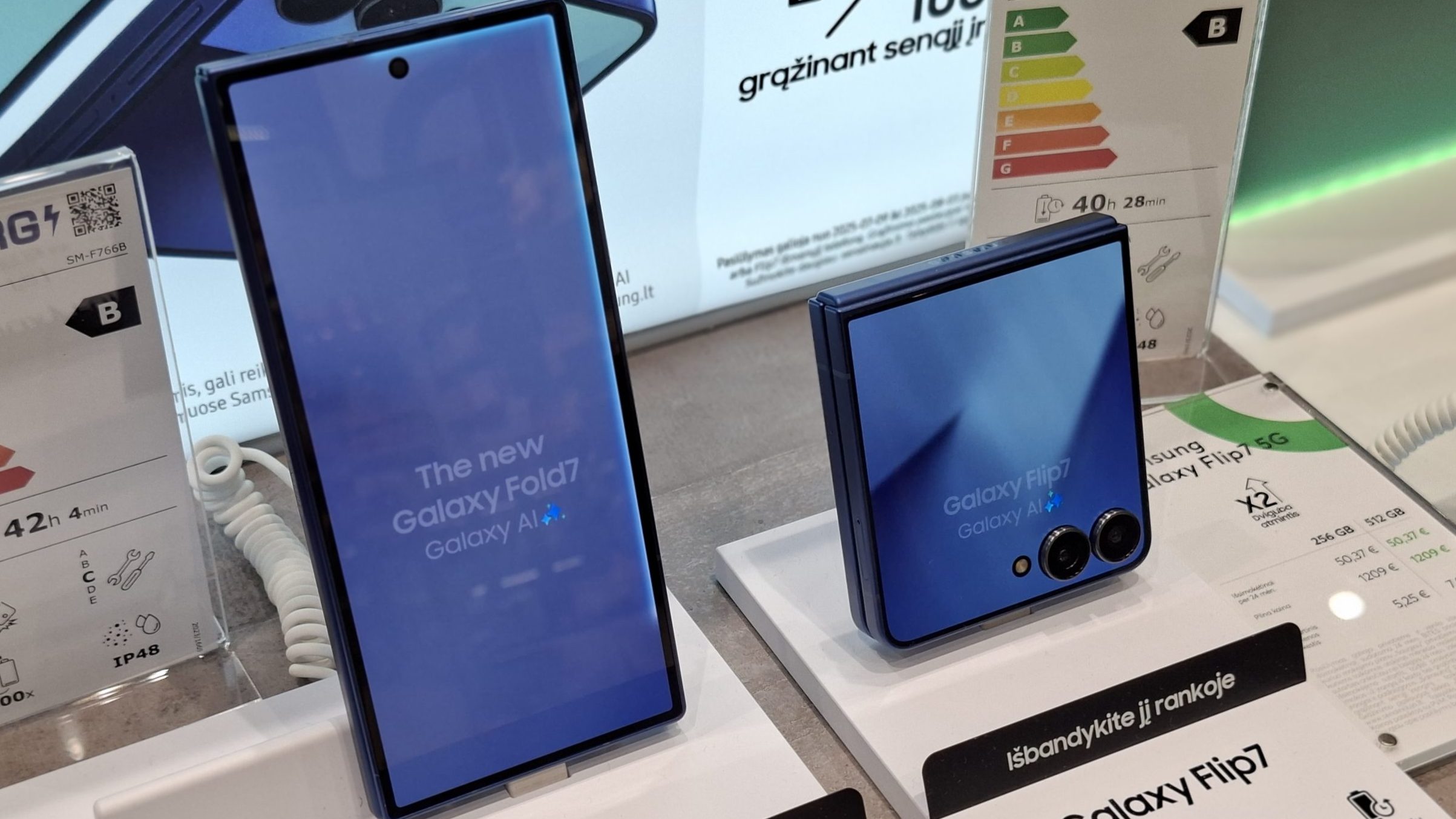The Rebirth of Mobile Innovation
The smartphone industry in the United States has long been dominated by incremental updates—better cameras, faster processors, and sleeker designs. But in recent years, a new wave of excitement has emerged: foldable phones. Once considered a futuristic fantasy, these devices are now capturing real market share and reshaping how Americans interact with their mobile devices.
From Samsung’s Galaxy Z series to Google’s Pixel Fold and Motorola’s Razr, foldable phones are redefining innovation in the U.S. market. According to Counterpoint Research, foldable smartphone shipments in the U.S. grew by over 50% in 2024, signaling that the technology is no longer a niche experiment but a mainstream movement.
This comprehensive guide explores how foldable phones work, why they’re gaining traction, and what the future holds for flexible displays in the American market.
1. What Are Foldable Phones? Understanding the Technology
Foldable phones are smartphones that use flexible OLED (Organic Light-Emitting Diode) displays allowing the device to bend or fold. Unlike traditional phones, foldable devices come in various configurations—some open like a book, while others flip vertically like classic clamshell phones.
| Type | Description | Example |
|---|---|---|
| Book-Style Fold | Opens horizontally to create a tablet-sized display. | Samsung Galaxy Z Fold 5, Google Pixel Fold |
| Clamshell Fold | Folds vertically for compactness. | Samsung Galaxy Z Flip 5, Motorola Razr+ |
| Dual-Screen Hybrid | Two separate screens connected by a hinge. | Microsoft Surface Duo 2 |
Scientific Insight:
A 2023 study by the University of Cambridge’s Centre for Advanced Photonics found that foldable OLED screens can endure over 200,000 folds without performance degradation—supporting their long-term viability for daily use.
2. Why Foldable Phones Are Capturing the U.S. Market
a. A Fresh Form of Innovation
After years of smartphone stagnation, foldable phones offer something genuinely new: versatility. Americans, known for their appetite for cutting-edge tech, are embracing this new experience that blends productivity with portability.
b. Enhanced Multitasking
Foldable phones allow users to run multiple apps simultaneously. For instance, users can video call while referencing a document, or stream a movie while browsing social media—functions highly valued by remote workers and business professionals.
c. Entertainment on the Go
The larger display makes foldable phones perfect for streaming, gaming, or reading. A 2024 survey by Statista revealed that 68% of U.S. consumers consider screen size one of their top three buying factors for smartphones, giving foldables a distinct edge.
d. Status Symbol and Design Appeal
In a culture that values innovation, foldables also serve as a status symbol. Sleek designs, premium materials, and futuristic folding mechanisms appeal to tech-savvy Americans eager to stand out.
3. Top Foldable Phones in the U.S. 2025 Market
| Model | Starting Price | Key Features | Best For |
|---|---|---|---|
| Samsung Galaxy Z Fold 5 | $1,799 | 7.6” AMOLED display, multitasking tools, S Pen support | Business professionals |
| Samsung Galaxy Z Flip 5 | $999 | Compact clamshell, strong hinge, external cover display | Style-conscious users |
| Google Pixel Fold | $1,799 | Tensor G2 chip, optimized Android interface | Android enthusiasts |
| Motorola Razr+ (2024) | $999 | Retro-inspired design, 165Hz display | Trendsetters |
| OnePlus Open | $1,699 | Lightweight design, vivid AMOLED screen | Multitasking and media use |
These models dominate search queries for “best foldable phones in the U.S.”, “top foldable smartphones 2025”, and “foldable vs traditional smartphones”—making them vital for SEO-driven content.
4. Foldable vs Traditional Smartphones: A Comparative Insight
| Aspect | Foldable Phones | Traditional Smartphones |
|---|---|---|
| Screen Size | Expands into tablet-sized display | Fixed screen size |
| Portability | Foldable for compactness | Slim, single slab |
| Durability | Improved but still developing | Generally more robust |
| Price Range | $999–$2,000 | $400–$1,300 |
| Use Case | Productivity, media, multitasking | General communication and apps |
| User Appeal | Early adopters, tech lovers | Mainstream users |
Expert Insight:
According to Harvard Business Review (2024), early adopters tend to pay up to 30% more for innovative products that provide functional flexibility—explaining why foldables maintain a healthy premium over standard smartphones.
5. Technological Advances Behind Foldable Phones
a. Flexible OLED Displays
Flexible OLED panels are the foundation of foldable design. Unlike traditional glass displays, they use polyimide layers that can bend thousands of times without cracking.
b. Ultra-Thin Glass (UTG)
Samsung pioneered Ultra-Thin Glass, allowing screens to feel more like traditional glass while still bending. This innovation significantly improves tactile experience and longevity.
c. Hinge Mechanisms
Modern hinges are feats of engineering. For instance, the “Flex Hinge” in Samsung’s Z Fold 5 eliminates gaps when closed and reduces internal stress, contributing to smoother folding motion.
d. Improved Battery Design
Battery optimization is crucial for dual-screen functionality. Newer foldables feature split battery systems that distribute power evenly across both halves of the device, improving efficiency and heat management.
6. The Psychology Behind the Foldable Craze
Foldable phones don’t just appeal to logic—they tap into human psychology and emotion. A study from Stanford University’s Graduate School of Business (2024) found that consumers are drawn to transformative devices because they represent adaptability, progress, and identity expression.
For many, owning a foldable smartphone is not just about utility—it’s a statement: “I embrace the future.”
7. Challenges in the Foldable Market
Despite their growing popularity, foldable phones face real challenges:
- High Price Point: The technology is expensive, keeping it out of reach for many Americans.
- Durability Concerns: Although improved, foldables still lag behind traditional phones in ruggedness.
- App Optimization: Some apps are not yet optimized for foldable layouts, leading to inconsistent experiences.
- Battery Life: Large screens and dual operations drain batteries faster.
However, these issues are expected to fade as software developers and manufacturers refine their designs.
8. Foldable Phones and the American Consumer Behavior
The U.S. tech market thrives on innovation and individuality. Foldable phones align with American consumer values such as freedom of choice, personalization, and advanced technology.
- Millennials and Gen Z are the primary adopters, viewing foldables as lifestyle enhancers rather than mere gadgets.
- Business professionals appreciate the dual-screen productivity for meetings, presentations, and multitasking.
- Digital creators leverage foldables for content creation, editing, and streaming on larger, flexible displays.
9. The Economic Impact of Foldable Phones in the U.S.
Foldable phones are influencing not just consumer behavior but the broader mobile economy.
- Tech Employment: Growth in flexible display R&D has led to new tech jobs in materials science and product engineering.
- Retail Competition: Carriers like Verizon, AT&T, and T-Mobile now offer trade-in incentives and lease options to attract foldable buyers.
- Accessory Market Boom: Foldable-specific cases, screen protectors, and styluses have become multi-million-dollar markets.
According to Purdue University’s 2024 Tech Economy Report, the U.S. foldable smartphone market is projected to hit $10 billion by 2026, driven by rising consumer confidence and manufacturing improvements.
10. The Future of Foldable Phones in the American Market
Analysts predict that by 2027, 1 in 5 premium smartphones sold in the U.S. will be foldable. Apple’s rumored entry into the category (potentially with a foldable iPhone) could further accelerate mainstream adoption.
Emerging trends include:
- Rollable and stretchable screens for even more flexibility.
- Eco-friendly materials to meet sustainability goals.
- AI-enhanced multitasking, allowing devices to anticipate user needs across screens.
Foldable phones are no longer a luxury novelty—they represent the next phase of smartphone evolution in America.
FAQs About Foldable Phones in the U.S. Market
1. Are foldable phones durable enough for everyday use?
Yes. Modern foldable phones, especially from Samsung and Google, have undergone rigorous hinge testing and water resistance certification, making them reliable for daily use.
2. Do foldable phones cost more to repair?
Repair costs are higher due to specialized materials and dual displays, but manufacturers now offer warranty and protection plans to offset these expenses.
3. Will foldable phones replace regular smartphones?
Not entirely. While foldables will grow in popularity, traditional smartphones will remain dominant for users prioritizing affordability and simplicity.
4. Are foldable phones suitable for business use?
Absolutely. Their multitasking capabilities, split-screen productivity, and stylus support make them ideal for entrepreneurs and professionals on the go.
5. How long can a foldable phone last?
According to Samsung’s durability tests and research from the University of Cambridge, modern foldable screens can withstand 200,000+ folds, translating to 5–7 years of regular use.



